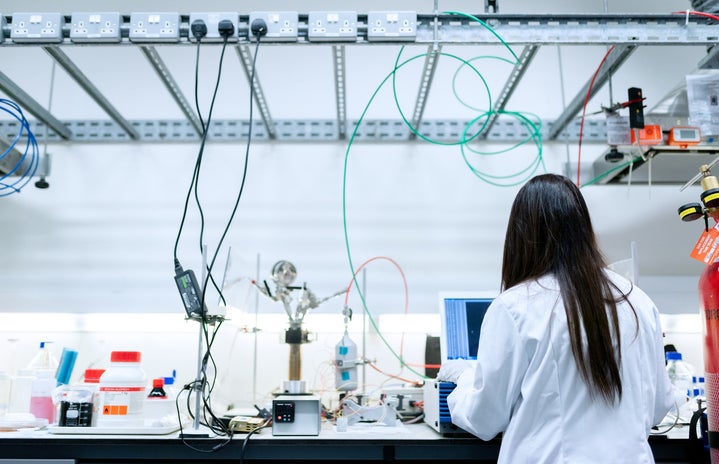With the COVID-19 pandemic people have been trying to follow and understand science more than ever. Understandably it’s hard, with the long fancy terms and complicated processes, even a science major (like me) has trouble wrapping their head around it. So how can we tell if something we’re reading is true or just plain fiction? I give you…. The CRAAP Test! (Yes that is actually what it’s called, scientists like to be funny sometimes).
While the CRAAP Test is hardly foolproof, it works a large majority of the time. This test is mainly used for when scientists or other researchers/students want to find good sources to use in their papers and experiments, but it can also be used in everyday life. Using this test will hopefully allow us to determine which scientific sources are good and which are total crap. First off CRAAP stands for….
C – Currency
R – Relevance
A – Authority
A – Accuracy
P – Purpose
The meaning of these words may not be immediately clear, but fret not! I’ll explain them to you right now.
Currency:
The C stands for currency, a fancy way of asking, “When was this information written?” Most articles and web pages will have a section that tells you when the information was written and if it has been updated. Articles will normally have the date written at the top, near the author of the text, while web pages normally have the last updated date at the bottom. So if you’re looking for information on vaccines an article with the date 2010 just isn’t going to cut it anymore. Another way to tell if an info source is current is to check whether the referenced links are still functioning. If the link leads to an error message then that website was probably removed due to age and is no longer a reliable source.
Relevance:
The R stands for relevance. Relevance basically asks, “Does this information actually answer your question?” Say you’re looking for an article on how the COVID-19 virus works. If you click on a link and it leads you to a page saying that COVID-19 is not real, that source is not relevant because it does not answer the question you asked. Relevance also refers to the level of education you have on the topic already. A biology major will have more advanced information on viruses than an accountant, so it’s important to find a source with accurate information that you can understand.
Authority:
The first A stands for authority. This is when you ask, “Who is the author of this source?” It is especially important for health information that you find an author with sufficient understanding and education or a background in biology or in health. You want to easily be able to find the author’s credentials, something that points to their qualifications on the subject. For example, I am an undergraduate in the neuroscience program at my university; this means you can trust me when I give you basic information on how a virus works, but maybe not information regarding the way the COVID-19 virus works. It’s also a very good sign if the author provides contact information. That means they’re open to receiving critiques. Finally, the URL code can provide you with authority information before you even click the link. The second part of the domain name can inform you on what type of authors wrote the source. Both .com and .net are public domain, meaning anyone can write on or own that website. However, .edu and .gov are specific domain names that only certain people can write on, and .org is normally reliable as well (there are some cases where it’s not). So Becky from Facebook is probably not giving you accurate information about COVID-19 science.
Accuracy:
The second A stands for accuracy. This asks, “Is the information based on evidence?” For example, the misconception that vaccines “cause” autism has absolutely zero evidence to support the claim. However, the statement that vaccines prevent the spread of illnesses like polio, measles, and chicken pox, is very supported by evidence. The next thing you should look for is an abundance of spelling errors and typos. If they are misspelling important words pertaining to the subject, it is most likely that the author doesn’t know what they’re talking about. Finally, you should check multiple sources and make sure they agree. They likelihood the info is correct increases as more and more sources verify each other. If the results of a study have never been replicated, it is almost guaranteed the original study was flawed in some way. You can also check to see whether a source seems to have a biased tone, though sometimes it is hard to identify bias if you are not familiar with the subject.
Purpose:
The P stands for purpose, asking “Why is this source being written?” There are five main reasons for writing: to inform, to teach, to persuade, to entertain, and to sell. For scientific information, you want sources that aim to inform or to teach. Be on the lookout for companies using manipulated scientific information to sell you products. You also want to be on the lookout for authors influenced by political, cultural, or religious biases; they may unintentionally, or intentionally, misconstrue information to align with their own beliefs. While it is not a bad thing by any means to be religious, have a different culture, or support a political party, when seeking scientific information you always want to be objective. So unfortunately for my nonna (that’s Italian for grandmother), there is no evidence to support that I will catch a cold by going outside with wet hair.
COVID-19 is scary enough without having to deal with the misinformation spread by a panicked population. Science has always been at war with the general population but I think that’s because it isn’t always presented in an understandable way. There’s no need to be overwhelmed by all the new things we’re discovering. And, if you’re unsure, just ask a scientist! Trust me, once they get going it’s almost impossible to shut them up ;)


